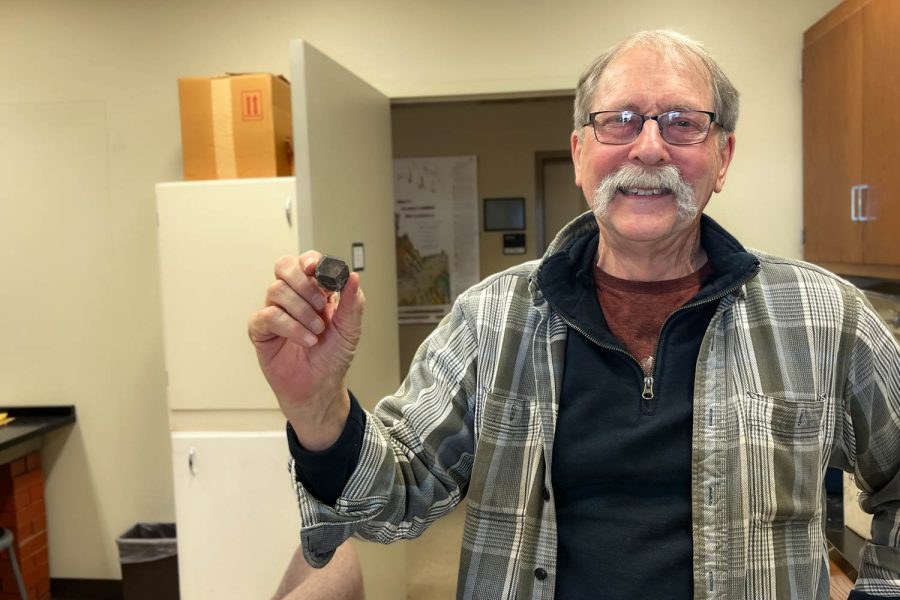The Palouse’s hidden gems — literally
Unique rocks and precious gems can be found in the Palouse region
WSU geology professor Peter Larson holds an unpolished “star garnet” from Idaho.
February 15, 2023
Millions of years ago, the Palouse was beachfront property, and many still wish it was today.
Unfortunately for those people, nothing can last forever. Dr. William Schlosser, a WSU ecology professor, known by his students as “Dr. Bill,” said the sandy beaches eventually compressed into quartzite before being flooded by basalt.
“That quartzite material was the bedrock in the area,” he said. “Kamiak Butte, Steptoe Butte and Paradise Ridge were mountains of quartzite so tall they stayed above the flood basalts.”
Schlosser said that those flood basalts came millions of years after the quartzite, “There was a magma hotspot fixed under the crust … so heavy and dense that it would move underneath the continent, except here it bubbled up to the surface and broke through starting on the Oregon coast and flooding across the Columbia Basin.”
That hotspot, Schlosser said, is now below Yellowstone, giving it its volcanic activity today.
This basalt covered the Palouse region as deep as three miles in some places, Schlosser said, burying most of the region’s geologic history. Despite that, there are still many places near Pullman where unique rocks — and even precious gems — can be found.
The easiest gem-like rock to find that many people seek out is quartz. Because of the quartzite on all the Palouse’s peaks, quartz is very common both there and in all the rivers that flow from those points.
However, there are much rarer stones here, too.
“Opal has been found and is fairly common in the Palouse,” said WSU geology professor Peter Larson.
Larson said that though the opal here is not typically regarded as gem quality, some people do make gems out of it by cutting and polishing it. He also added that it had been mined in some of the Palouse in the past, but the opal was not consistently high enough quality to keep the mining going.
“Some of it is crystal clear, as clear as water, and looks sort of like a blob of water,” Larson said. “It’s not really that hard to find —it’s actually kind of common.”
To find it, Larson said to look for open spaces in exposed basalt — the same basalt that flooded over the whole region millions of years ago — where it formed when groundwater filtered through the basalt and picked up particles of a mineral known as silica along the way.
In addition to these opals, an even rarer gem can be found not too far from Pullman known as “star garnet.” This unique variety of garnet is only found in the hills northeast of Moscow and in a small region of India, according to Idaho’s tourism agency “Visit Idaho.”
Star garnet gets its name from a unique mineral structure inside the garnet which causes light to reflect inside the stone and create a star-like pattern, Larson said.
There are some places nearby in Idaho, where “you can go to and pay for a little plot of land where you can dig for star garnets …it’s really a hobby thing for most people,” Larson said. “Though some people do make high-end jewelry out of it.”
When most people imagine the beauty of the Palouse, they think of the rolling hills surrounding Pullman-Moscow, with distant mountains and amber waves of grain. However, now hopefully that vision might also include some of the amazing geology that is right under everyone’s noses — literally.












